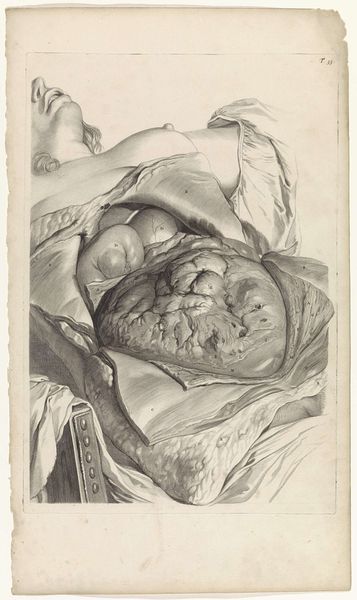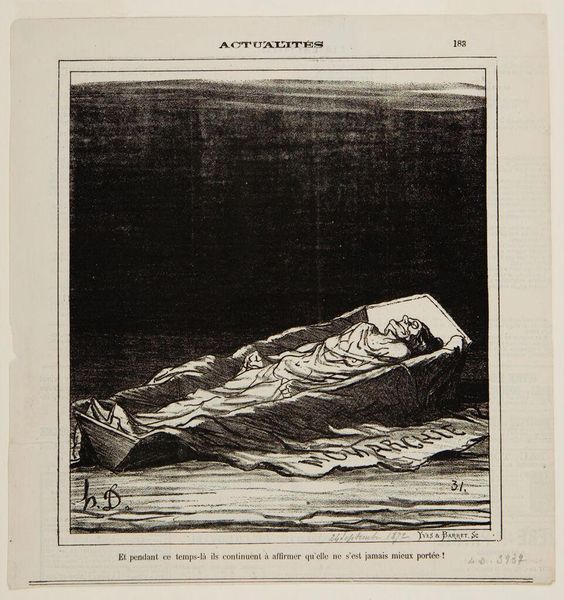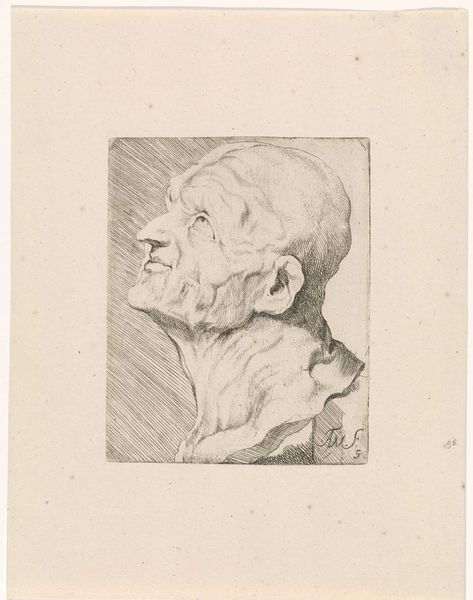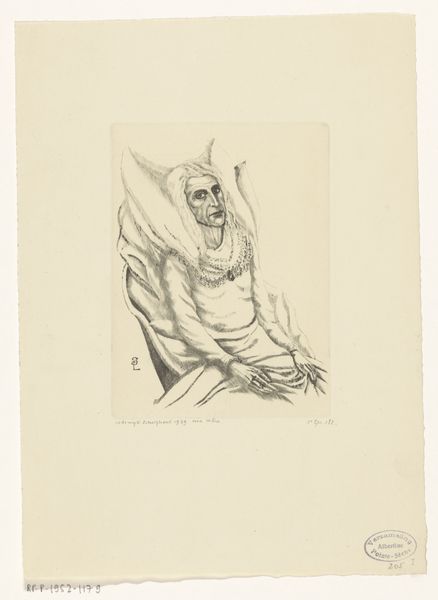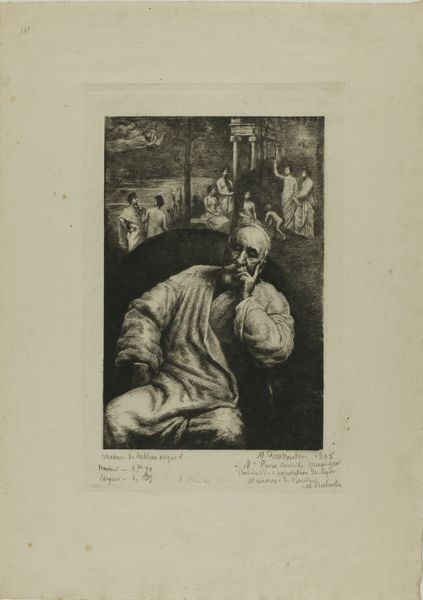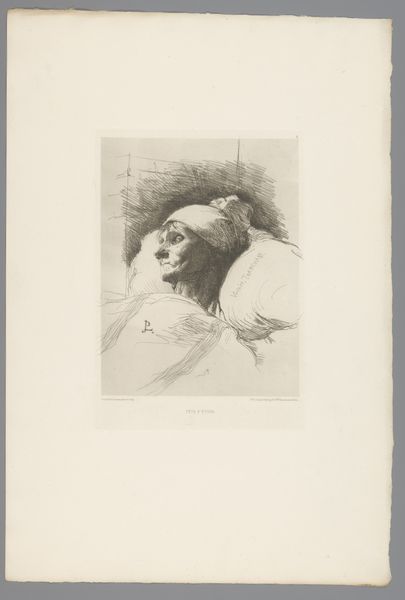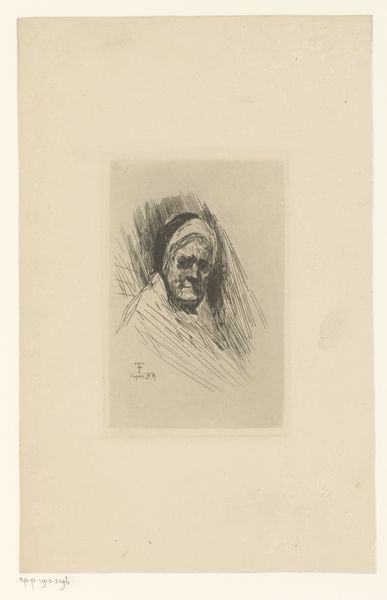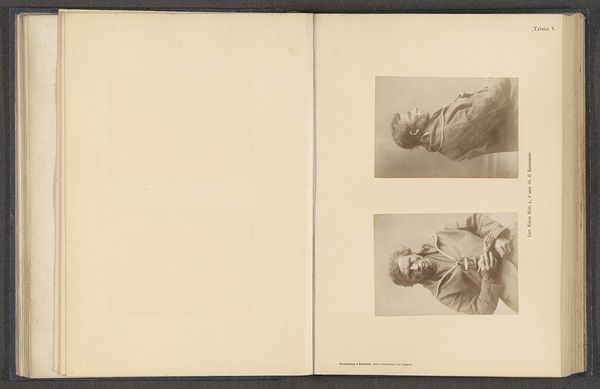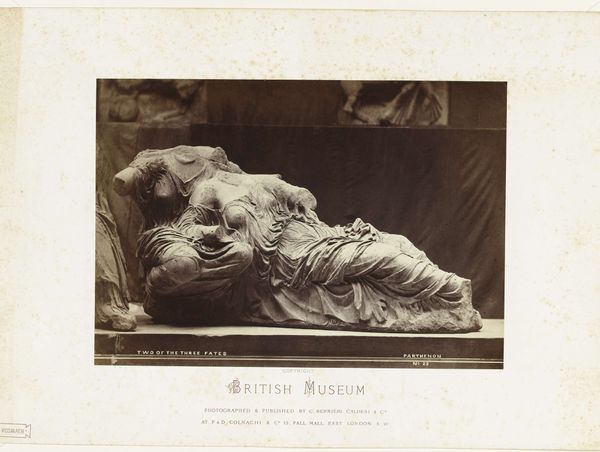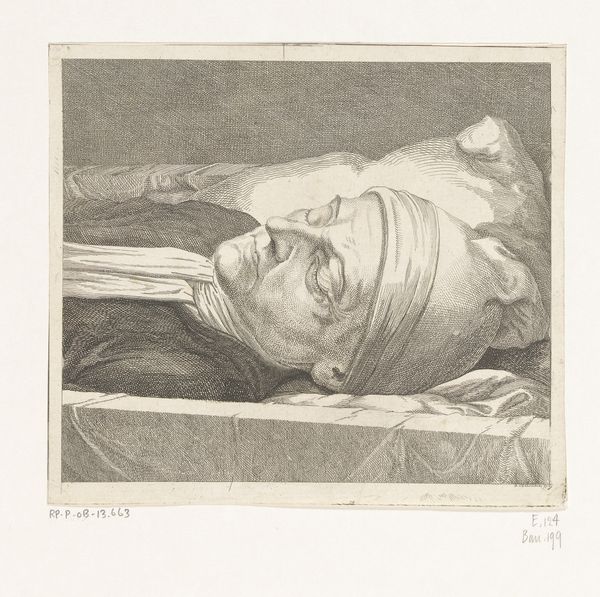
drawing, pencil
#
portrait
#
pencil drawn
#
drawing
#
pencil sketch
#
pencil drawing
#
pencil
#
history-painting
#
realism
Dimensions: height 350 mm, width 243 mm
Copyright: Rijks Museum: Open Domain
Curator: Wegner & Mottu's "Hoofd van Michiel de Ruyter," executed between 1881 and 1882, presents a striking image, a portrait rendered in pencil that commands immediate attention. Editor: The raw emotion radiating from this sketch is unsettling. The mouth is agape, as if in a silent scream, while the eyes are intensely shaded; the realism, stark. It almost feels like a visceral cry for help across time. Curator: Michiel de Ruyter was, of course, a celebrated Dutch admiral, and this drawing resides here, at the Rijksmuseum, reminding us of the ongoing construction of national heroes. I wonder how this image functioned within 19th-century Dutch society and its burgeoning national identity. Editor: The artistic choice to present such a prominent figure in a moment of vulnerability or pain is really interesting. I’d be curious to learn about the public's reception; did it challenge the traditional, idealized depictions of historical figures that dominated much of academic painting at the time? Curator: It's possible. Art historians suggest that realism often served as a tool to both immortalize and humanize iconic figures. This work is quite special because we see this play between those worlds, challenging viewers to engage critically with their national icons. How might portrayals of individuals in positions of power then affect present-day notions of identity and authority? Editor: This work invites reflections on collective memory and challenges established narratives. Its existence as a pencil drawing—almost a fleeting moment captured—speaks to how these leaders are complex figures and asks us to reimagine the stories that nations like to tell about themselves. I'm still drawn to that screaming mouth. Curator: A cry from history itself, perhaps. Editor: Precisely.
Comments
No comments
Be the first to comment and join the conversation on the ultimate creative platform.

